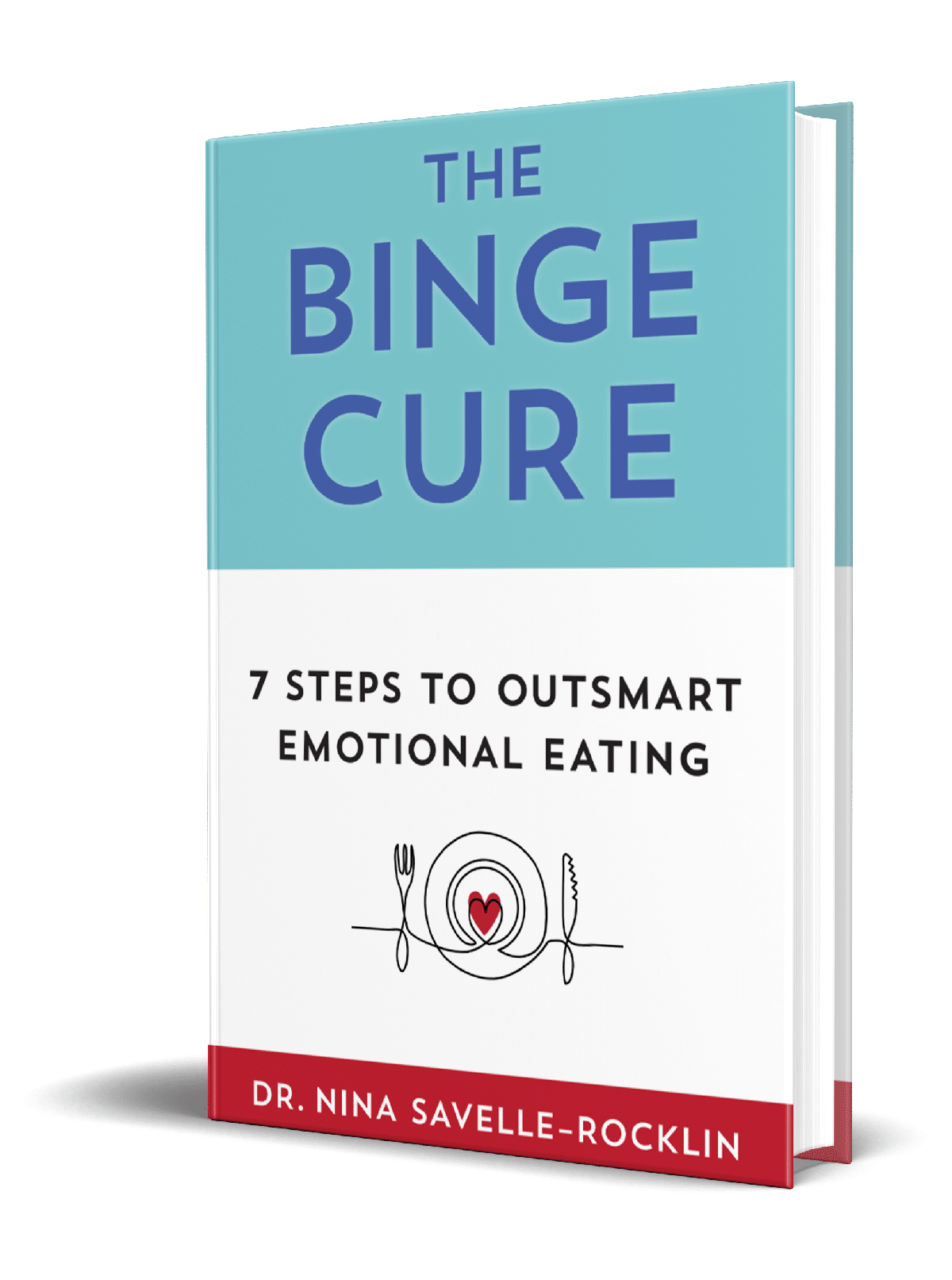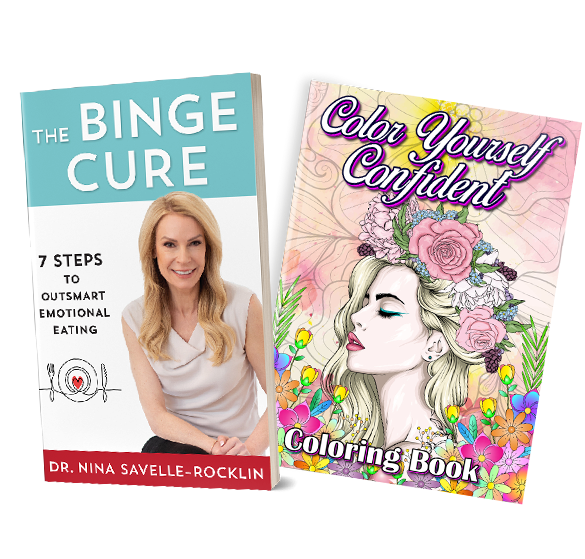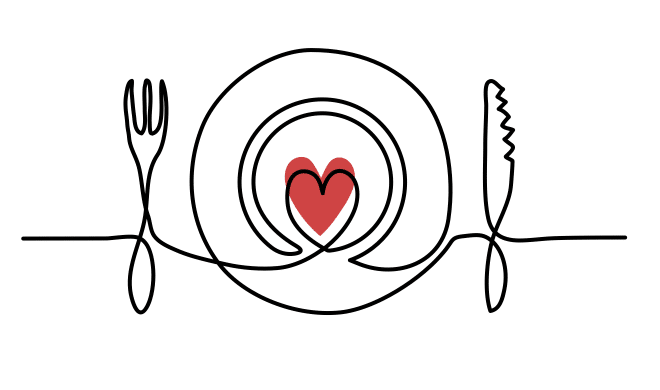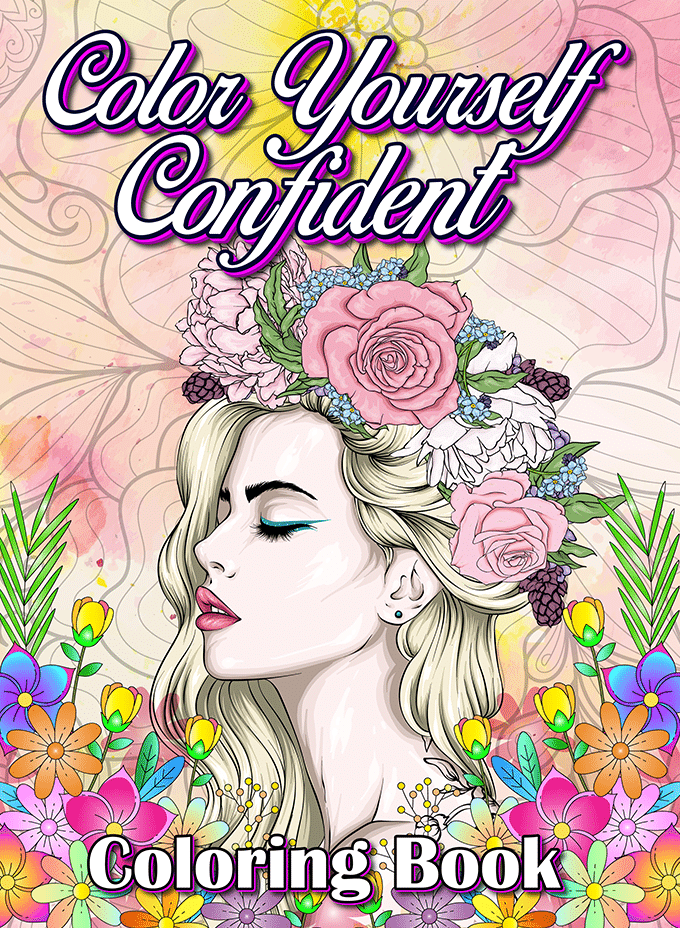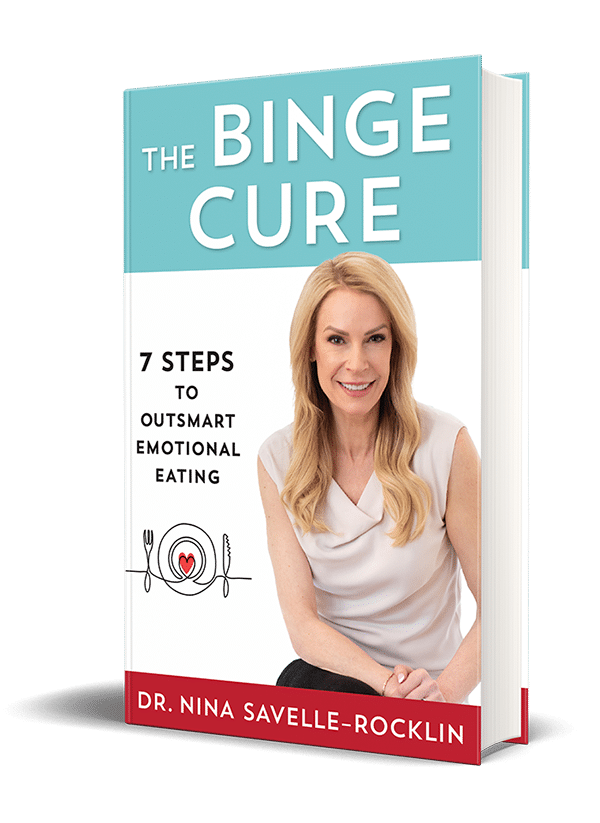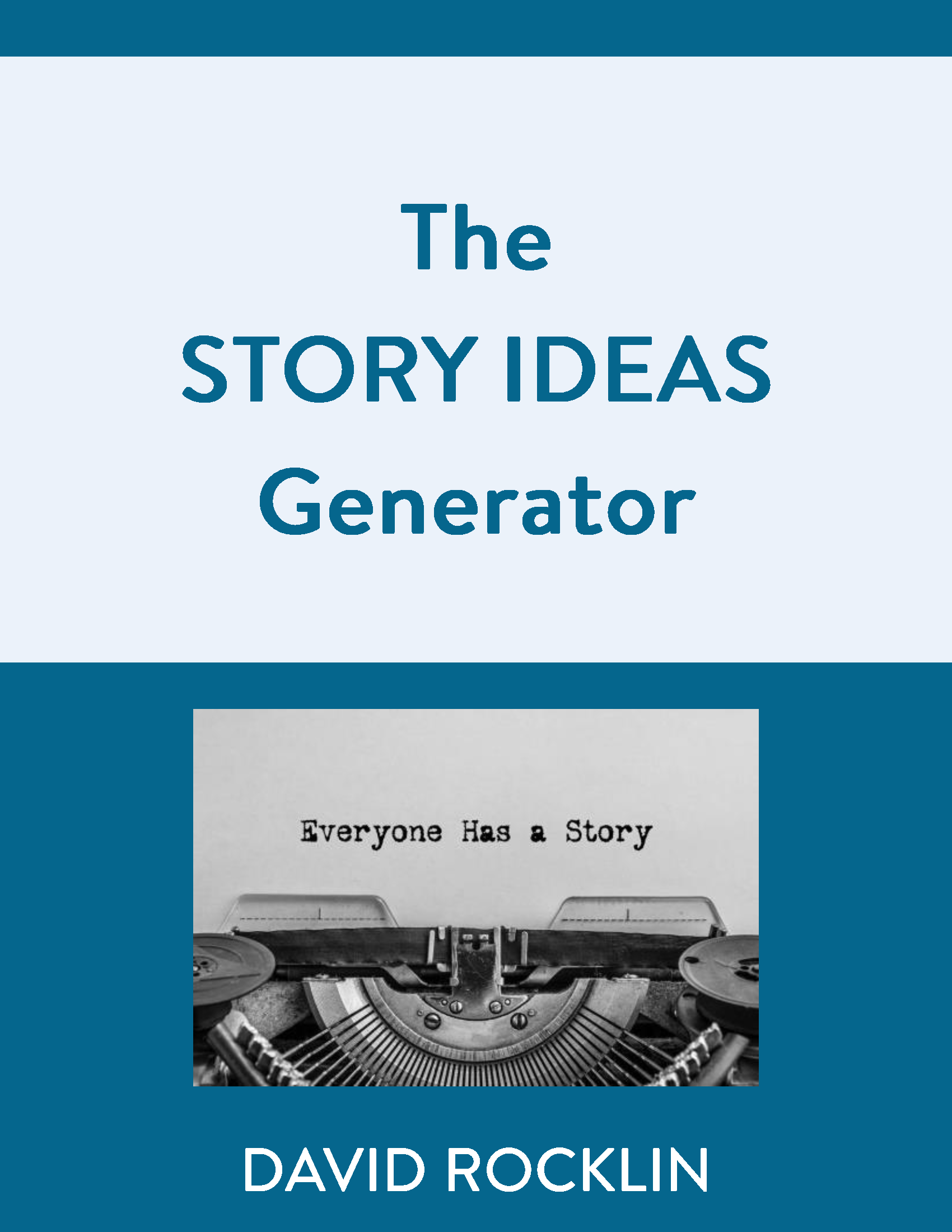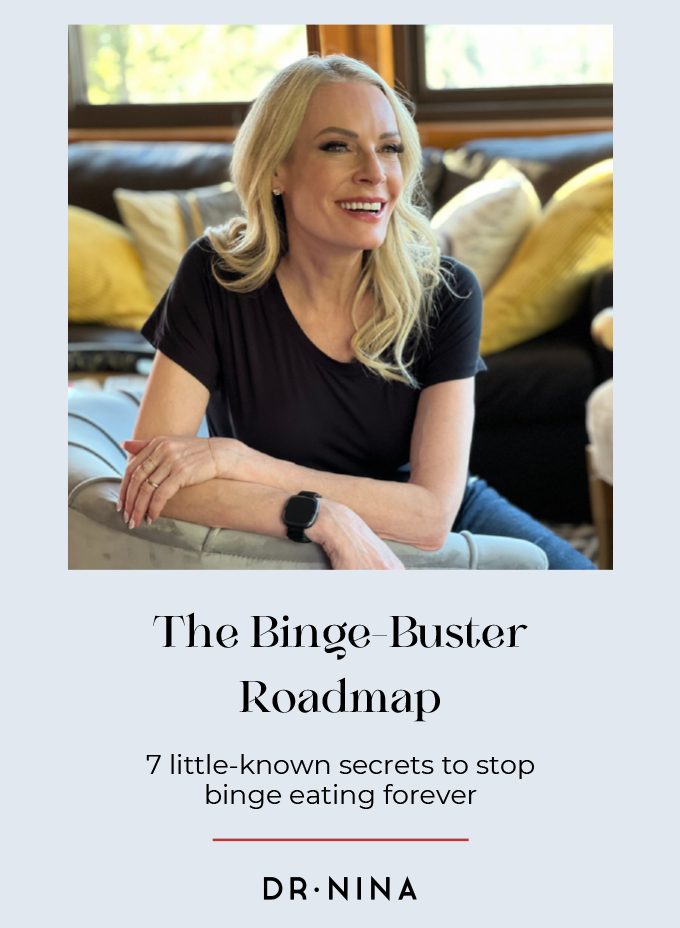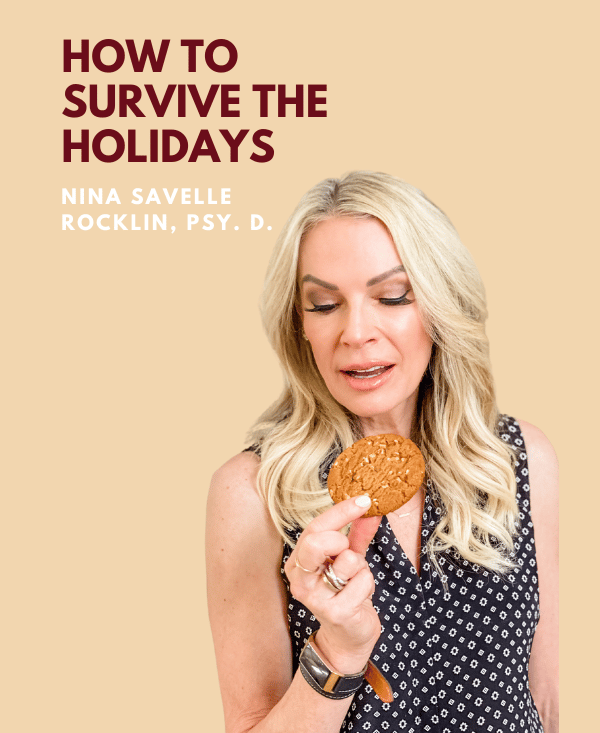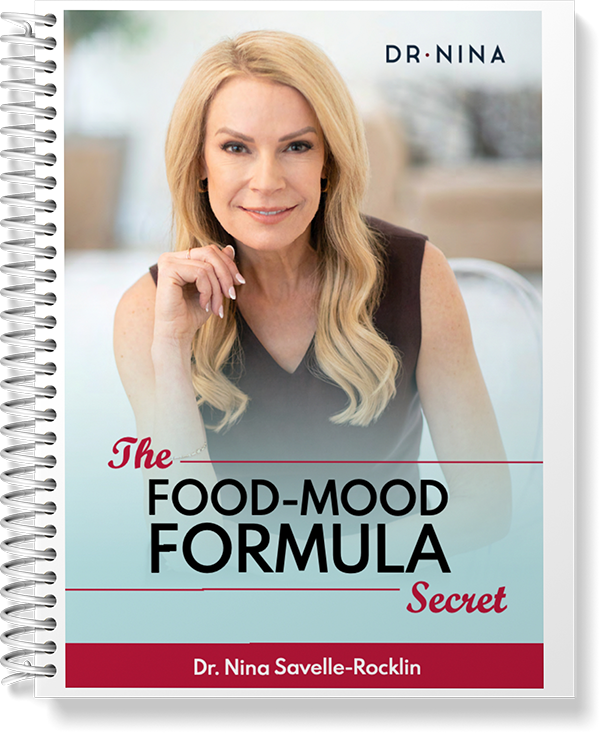Dr. Nina Savelle-Rocklin
How to stop a binge in 30 seconds

Table of Contents
- Muscle Relaxation Exercise
- The Four Senses Exercise
- Visualization exercises
- FAQ:
- How do I know if I’m bingeing for emotional reasons? Maybe I’m just hungry.
- How do I know if I just need more control or if it’s something more serious?
- My husband might be bingeing in secret, but I’m confused. I thought this was something that only happened to women.
- I identified why I want to binge, but it doesn’t stop me. What am I doing wrong?
- What are some ways of getting my emotions out other than finishing the prompts in your book? Sometimes I have a hard time knowing how to express myself.
Binges happen for a reason. If you're turning to food, you're turning away from something else. But sometimes, it's hard to figure out what that is.
We can’t process our feelings until we feel calm. But often we don’t feel calm until we eat as a way of sedation. That seems like a Catch-22, one of those situations that trap us in contradiction. Like, you can’t get a job without experience, but you can only get experience by having a job.
If you're eating for comfort or distraction–whether it’s because of emotional stress or anger or something else that’s causing you pain or anxiety—you may not know how to calm down.
To stop a binge in 30 seconds, you have to calm your body and center your mind. When you stop emotions from escalating you can focus on what’s eating ‘at” you instead of on what you’re eating.
Muscle Relaxation Exercise
Start by tightening the muscles in your legs for as long as you can.
Then, focus on tightening your stomach, then your arms. Make fists and keep your muscles really, really tight.
Hold that tension as long as possible, a minimum of fifteen seconds but ideally as long as possible.
Then release.
Feel that? You’re probably already feeling more relaxed.
The idea of this exercise is that without muscle tension, you can’t access muscle release. When your body is relaxed, your mind will follow. When your mind is relaxed, you can better focus on cultivating a compassionate, kind, and supportive response to yourself.
The Four Senses Exercise
Yes, we have five senses. But if you binge or start snacking when you’re upset or stressed, you’re using food as a primary way to self-soothe. Therefore, the sense of taste is one to be avoided with this exercise.
The Four Senses technique puts you in touch with the other four senses as a way of helping you center yourself.
Wherever you are, look around and say one thing that you are…
- Touching
- Seeing
- Smelling
- Hearing
For example, you might say, “I feel the smooth leather of the chair I’m sitting on. I’m looking at a beautiful sunset (or a concrete wall, depending on where you live). I smell the aroma of coffee or the scent of flowers. I hear birds chirping outside (or the sounds of traffic, if you live in a city).
The idea is that by focusing on your senses and staying in the present moment, you will feel more relaxed. This is what’s called a “grounding exercise” and it’s designed to defeat anxiety and create a greater sense of calm.
You can take this exercise a step further by not only noticing what you can touch, see, hear, or smell, but by taking action.
For touch, wrap yourself in a warm, furry blanket.
For sight, go outside and treat your eyes to a feast of plants, landscapes, and beauty. Or enjoy the cityscape, or the sight of your loved ones.
For the sense of smell, burn a candle with a scent that is especially relaxing. Or light some incense. Spray some perfume.
For hearing, consider if you have a favorite song or playlist that puts you at ease? Pop in your airpods and let your mind focus on those sounds.
Visualization exercises
Visualization is a powerful way to change your state of mind and stop a binge. Using the power of your imagination, you can work through anxious situations or emotions instead of escaping stress by eating.
There are two ways to use visualization: the first is to imagine a happy place where you feel safe and calm; the second is to think about something you’re afraid of, and imagine a positive outcome. Keep those four senses in in mind as you work through the visualizations.
The Happy Place Technique
Visualize a place where you feel happy. It can be an actual memory or something in your imagination.
Where are you? Who else is there? Don’t limit yourself to reality; you can go anywhere your mind takes you.
In your imagination, what are you touching, seeing, hearing, and smelling? Allow yourself to be in this imaginary place until you start to feel your heartbeat slow, and you experience a calm peacefulness.
When I used this technique in a support group, one of the women shared this: “When I'm overwhelmed, I visualize being on a lake with the sun shining and water lapping the shore. I remember a time I went canoeing and a black swan swam alongside the canoe. I had the most lovely sense of wellbeing and calm.”
Recalling that memory helped her feel calmer and as a result, she stopped bingeing when she got anxious.
The Scary Place Technique
Imagine a situation that makes you nervous. Instead of worrying about what negative things might happen, use your imagination to create the best outcome possible.
Again, use the four senses to bring this to life. What upcoming situation is causing you anxiety? Whether it’s a job interview, a personal challenge, a blind date or anything else, imagine the very best outcome, visualizing and imaging the four senses.
Marcia was a talented singer-songwriter but performance anxiety was holding her back. She wasn’t moving forward in her career because she had a crippling fear of singing in public.
She got so nervous her legs would tremble violently. She realized she thought the audience was judging her for being so nervous.
Instead, she decided to imagine an understanding audience full of people who were benefiting from her performance. She focused on how they resonated with her songs, since the lyrics made people relate to her and feel less alone. Once she did that, her knees stopped shaking for good. And guess what? Now she loves going on tour.
Using all these methods to calm down, along with learning to identify and process painful, difficult and upsetting emotions, helps you comfort yourself and find peace.When you are calm, you stop bingeing because you don't need food to cope.
FAQ:
How do I know if I’m bingeing for emotional reasons? Maybe I’m just hungry.
That’s a good question. It’s very important to distinguish if it’s physical hunger or emotional hunger
Here are some signs of physical hunger:
1. A growling, gurgling stomach
2. Feeling light-headed
3. Getting a headache, especially if you haven't eaten for a several hours
The signs of emotional hunger are located more in your thoughts than in your body.
1. A specific foods sounds good or looks good
2. You want to reward yourself
3. You want to calm down or feel better emotionally
The next time you reach for something, ask yourself if it's physical or emotional. That's a huge step in healing your relationship with food.
How do I know if I just need more control or if it’s something more serious?
Well we all occasionally use food to cope, when it becomes the main strategy that you use when things are tough, and when you just can't stop, that is an indication that you might have Binge Eating Disorder, which is a clinically diagnosable disorder.
Here are some signs that can help you identify if you have binge eating disorder.
- You can't stop thinking about food
- You eat until you're way past feeling full
- Sometimes it doesn't matter what you're eating; you just can't stop
- You feel shame and remorse afterward
Remember that Binge Eating Disorder is a way of coping. It is not a food addiction. It's not about willpower. It's not about control. And it is treatable, when you treat the real problem which is why you're eating instead of what you're eating.
My husband might be bingeing in secret, but I’m confused. I thought this was something that only happened to women.
Guys struggle with food, weight and body image, too.I once talked to someone who asked me if his eating problems were a result of his feelings.
I said, yes, that's a huge part of it.
He said, “I'm a dude, I don't have feelings.”
I said, “Well dude, yeah, you do. Because human beings have feelings. You're human and those feelings need your attention.”
Guys get a lot of messages that it's not okay to have emotions (other than maybe anger). They're told that boys don't cry.
The reality is that we all cry. We all feel mad, sad, glad and afraid. That's what makes us human. And when we allow ourselves the full range of our emotions, those feelings go away and we don't use food to cope.
So, whatever your gender – male, female, nonbinary – your emotions need your attention. And what you feel, you will heal.
I identified why I want to binge, but it doesn’t stop me. What am I doing wrong?
First of all, great job with identifying why you want to turn to food. but, here's the thing: realizing what’s eating at you is only the first step. We don't identify something and have it go away. For example, just realizing that you're angry or sad, doesn't make those feelings disappear. It just gives us information on what it is that we need to express.
Bingeing is a way of suppressing certain feelings, or it can be a way of displacing them. If you're angry at someone in your life like a loved one oh, it might be difficult to even realize that you're upset with that person. Instead you might eat to stuff those feelings down but end up getting mad at yourself instead. Then, the emotions that you had towards one person get turned against yourself.
So, after you identify why you want to binge, it's important to respond to yourself. That means expressing those feelings, and then acknowledging, validating, and reassuring, yourself. The only way to make emotions go away is to actually process them. identifying them is the first step of that process.
What are some ways of getting my emotions out other than finishing the prompts in your book? Sometimes I have a hard time knowing how to express myself.
When it comes to expressing emotions, there are some unique and unusual ways to get those feelings out. Here are a few of my favorites:
No 1:
Write all your thoughts and feelings on a sheet of blank paper. You don't even need to use full sentences. You can write single words like “sad” or “enraged” or “anxious.” Then, after you’ve done that, tear the paper into tiny pieces and throw the pieces in the trash. It may sound weird but it's great for getting your emotions out and then symbolically get rid of them.
No 2
Journal, but with a twist. Imagine you have a friend in your situation and your advising, comforting, and reassuring your friend. Journal about what you'd say to your friend and how you feel about your friend. There's something about writing that helps you get the emotions onto the page (which is better than stuffing them) and imagining that you’re talking to a friend can make it easier for you to access your thoughts and feelings..
No 3
Draw your emotions. Or paint them. What color is anger? What does pain look like? Conceptualize it artistically and allow yourself to be as creative as possible. It's amazing how cathartic it is to express yourself. When you express your feelings.. you’ll stop eating to cope.
Sick of obsessing about every bite?
GET THE CURE
The Binge Cure Book!
Enter “CURE” to receive a 20% discount.
No, I don’t want access to this terrific resource to help me overcome binge eating.
The Author

Dr. Nina Savelle-Rocklin is a renowned author and podcast host and one of the nation’s leading psychoanalysts known for the psychology of eating. Her signature message of, “It’s not what you’re eating, it’s what’s eating ‘at’ you” has resonated with hundreds of thousands of listeners from around the globe in 40 countries. As founder of The Binge Cure Method, she guides emotional eaters to create lasting food freedom so they can take back control of their lives and feel good in their bodies.
Related Blogs

